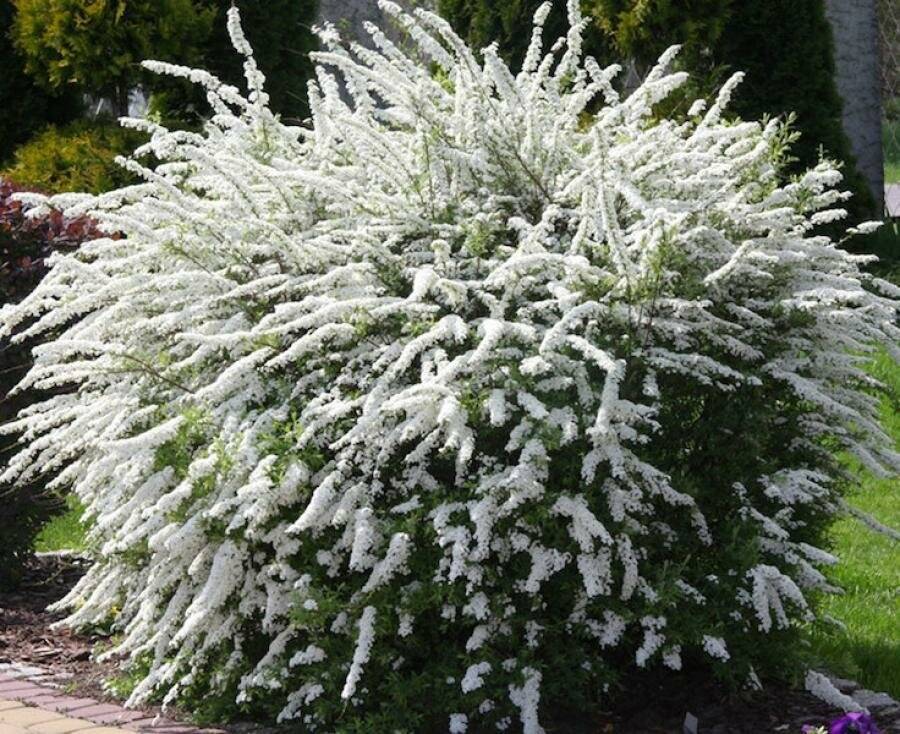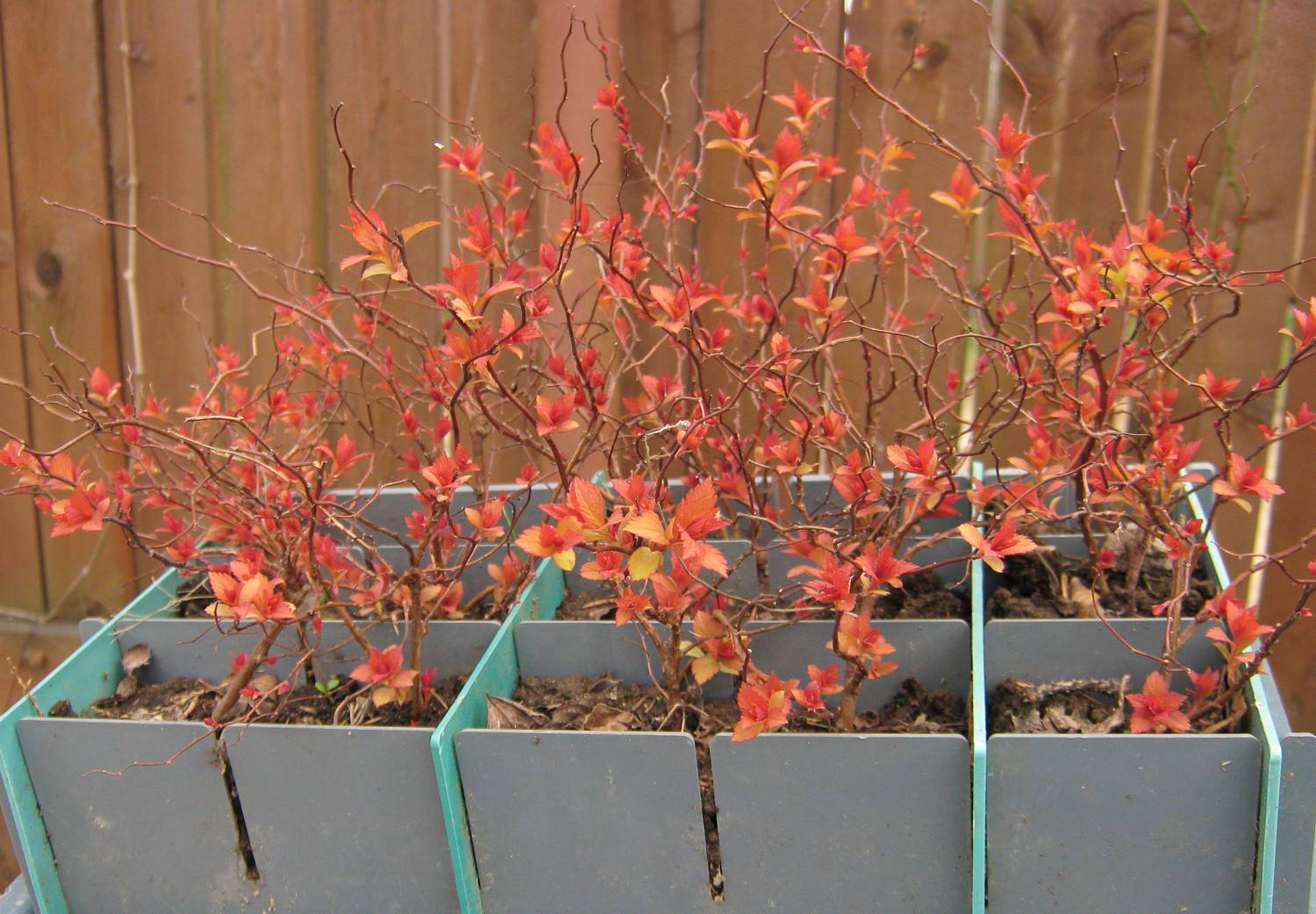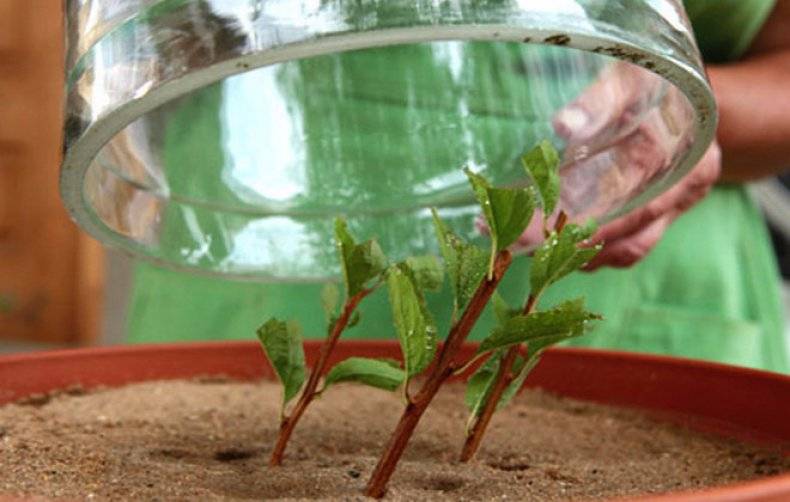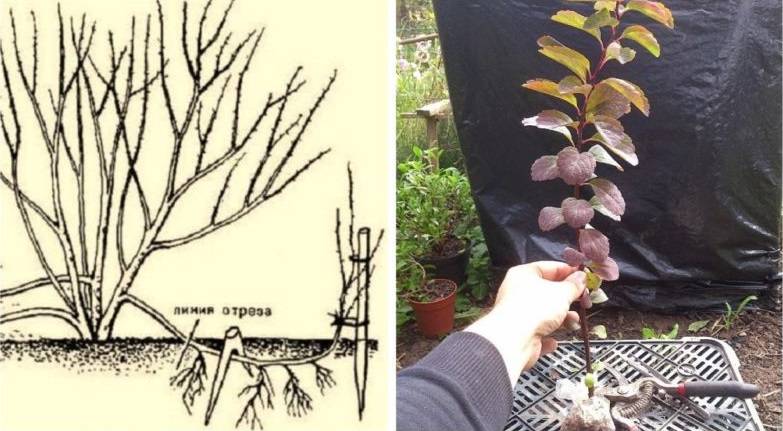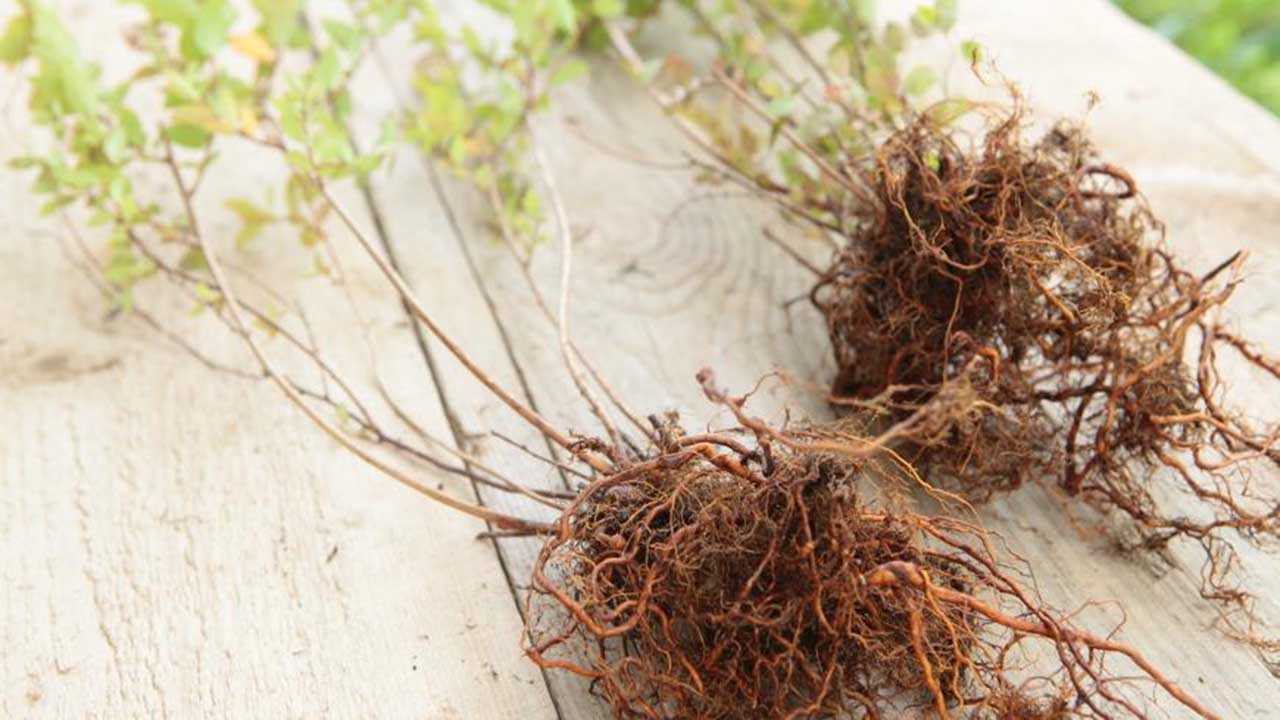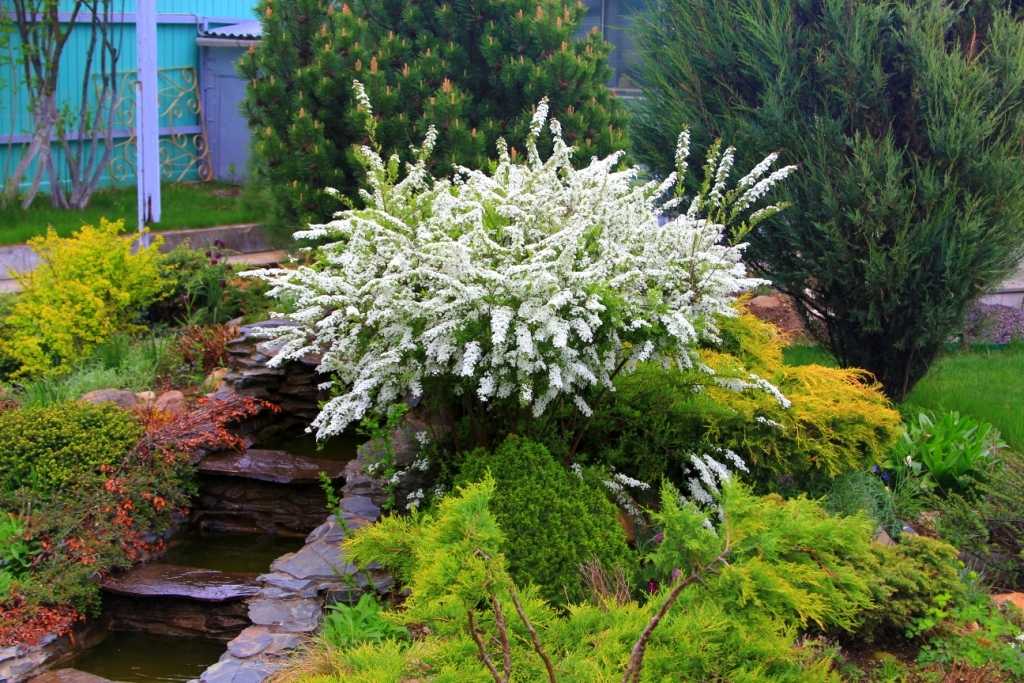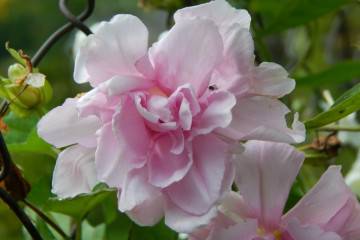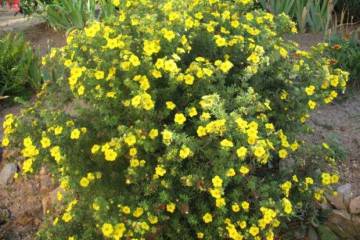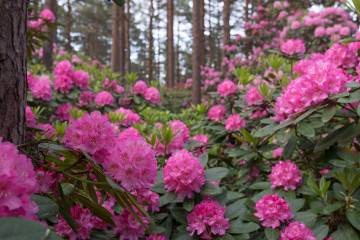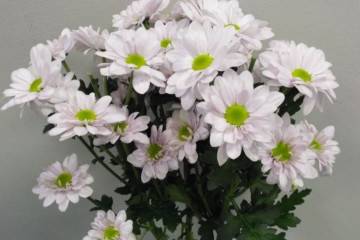Spirea Grefsheim - description, planting and care
Content:
Spirea is incomparable with anything during the flowering period. Everything is beautiful in it: the aroma, the beauty of the buds, the crown of a bush with bent branches. It is not for nothing that the people call her the bride, the snow in May. This is exactly what the gray spirea Grefsheim looks like (Spiraea Cinerea Grefsheim), a hybrid created in 1949.
Spirea gray Grefsheim: description of the bush
In the description of the spirea, Grefsheim, it is indicated that it was obtained on the basis of the spirea ordinary. The result is a beautiful spring hybrid with remarkable qualities. It is frost-resistant, easily tolerates short-term drought, does not suffer from bright sun, and is resistant to disease.
The bush itself is spreading and tall. An adult plant occupies a space of 2 × 2 m. The stems of burgundy color are thin, flexible, falling. Gray-green pointed leaves are jagged along the edges. The upper side of the sheet plate is darker than the wrong side. With the onset of autumn, the foliage turns bright yellow.
White buds in umbellate inflorescences plant the shoot along its entire length. They are very aromatic.
Planting a plant
Planting the spirea Ash Grafsheim and caring for the hybrid will not be difficult. Any breeding method inherent in it is completed successfully.
Planting from seeds
Spirea gray Griffsheim does not multiply by seeds. At least at home. Seed germination of the hybrid is only 4-5%. If you wish, you can check this fact empirically.
Planting seedlings in the openpriming
Saplings can be planted outdoors during the warm season, preferably in spring.
When making a hedge, the distance between the bushes is at least 0.5 m.When group plantings, the recommended distance is about 1 m.
The planting hole should be 2-3 times the size of the root ball. At the bottom of the hole, it is advisable to pour drainage (expanded clay, pebbles, broken brick).
How to care for spirea Grefsheim
For a beautiful bloom, the culture needs minimal attention. All care consists in:
- watering;
- loosening;
- top dressing;
- pruning;
- protection from pests.
Watering
The roots of the bush do not go deep into the ground, so it should be watered abundantly. One bush will require at least 15-20 liters of water per watering.
Watering frequency is 3 times a month. It is advisable to combine watering with loosening and at the end sprinkle the root zone with mulch (peat, humus, sawdust, straw).
Top dressing
The Grafsheim variety is very unpretentious. It will bloom without top dressing. But the splendor, the duration of flowering, and also the beautiful appearance of the bush depend on fertilization. It can be simple organic matter - mullein. If you dilute it with superphosphate (10 g per bucket of mullein solution), it will be even better.
Pruning
Spirea (Spirea) gray grows in one place for about 3 decades. Naturally, without trimming and shaping the crown, it will not be so decorative. Over time, the bush grows old, more and more dried branches appear on it. A thickened crown can contribute to the appearance of diseases and pests. Anti-aging shaping will help avoid these troubles.
By the way, to rejuvenate the bush, it is recommended to carry out a large-scale haircut. It is worth cutting out all the old branches, leaving only a few biennial and annual ones.
The quality of flowering also depends on timely pruning. Moreover, flowering shoots are shortened immediately after flowering, since in the next seasons young shoots of the current season, that is, one-year-olds, will bloom.
Reproduction methods
Spirea Greif shine reproduces by dividing the bush, cuttings and layering.
In the first method, the rhizome of an adult plant is divided into several parts.
Reproduction of the culture by cuttings is considered more common. For this, the middle part of the branch with 4-5 eyes is cut off. Cuttings can be planted directly into the ground or grown in individual pots on wet sand. Specimens planted at an angle take root faster. To speed up rooting, the seedlings can be covered with a glass or plastic cover.
Before the start of the growing season, you can dig in the branches into the groove without tearing off the bushes from the mother. Layers for strength must be pinned to the ground. It is important not to forget to regularly moisten the soil.
In the fall, the rooted layers are cut off from the bush, planted in a permanent place.
Transfer
Spirea can be transplanted from place to place during the entire growing season. Simple transplant and transplant with division have some differences.
A change of place is better tolerated by 3-4-year-old bushes. The root system of a young plant is still compact. It is easier to dig it up and plant it in a new place. The landing fossa will also not be large in size.
Spirea Grefsheim for the purpose of dividing the bush is recommended to be transplanted in the fall. These are usually large mature bushes over the age of 5-6 years.
A step-by-step description of the preparation of the Grefsheim spirea planting material:
- Pruning is carried out in order to dilute the crown, remove damaged and growing inward shoots.
- A bush with an earthen lump is dug up.
- The roots are washed to clean water.
- The roots are cut with a sterile instrument.
- Damaged roots are removed.
Delenki should have a good root piece and some shoots.
Preparing the landing pit:
- A hole is dug (the size should be 2-3 times larger than the roots).
- A third of the height of the pit is filled with a nutrient mixture from sod land, sand, peat.
- A division is placed on the layer of the mixture.
- The soil is poured to ground level, well compacted.
- The bush is watered at the rate of 20 liters per bush.
- The root zone is mulched with peat (humus, sawdust, rotted foliage).
With a simple transplant, the rules are the same, with the exception of dividing the rhizome.
Diseases and pests
Grefsheim is not susceptible to spiraea diseases, but the bushes have to be protected from pests. Juice-sucking insects such as the following are especially fond of the culture:
- spider mite. It settles on a leaf and slowly draws out juices from it, depriving it of food. The leaf plate turns yellow and falls off. At the first sign, the treatment of the bush with chemicals is required. Phosphamide (0.2%), karbofos (0.3%) are suitable. If necessary, the treatment should be repeated after 3-4 days;
- bean aphid. This pest destroys inflorescences and tender young shoots. You can fight aphids with agrovertin, aktara, intovir;
- oxalate lancet. The butterfly is gray. It is not dangerous for the plant, and its caterpillars can gnaw the entire bush. The same drugs will help to destroy the pest as against aphids. For prevention, it is advised to process the bushes in early summer (before the buds open) and in the fall with one of the drugs: fufanon, spark, fitoverm.
Flowering period
More than 90 varieties of spirea are known. They are distinguished by the shape of the crown (curved branches, erect), by the timing of flowering. Spirea Grefsheim belongs to spring varieties, so flowering does not last long, about 20 days.Dazzling white buds begin to appear in mid-May. The bush quickly becomes covered with a solid cloud of fragrant flowers. This is probably why it is most common among gardeners.
Preparing for winter
The plant tolerates frosts down to -25 ° C painlessly. With a further decrease, shoots, especially young ones, may die. If such cold weather was observed in the region, the bush should be insulated for safety. There is nothing complicated about it. It's just that all the branches are gathered in a bunch, tied up, pinned to the ground and covered. How insulation is suitable:
- dry foliage;
- straw, hay;
- peat.
To avoid blowing out, the embankment can be pressed down with spruce branches.
Use in landscape design
Spirea Grefsheim can be described as a versatile shrub for gardening. Designers love for the ability to give it a variety of shapes. Moreover, pruning does not harm the culture.
Decorated in different shapes, they are perfect for creating a hedge, zoning a site, creating flower beds, camouflaging unsightly buildings. Spirea is also good for protecting capricious plants from cold winds.
Even a bush growing in splendid isolation is a complete composition.
Despite the fact that ashen spirea Grefsheim is considered an unpretentious plant, it is worth considering it carefully. From good care, its decorative effect will multiply. A sunny place, grooming procedures will give you the opportunity to admire the decorative bushes throughout the season.
